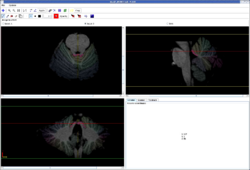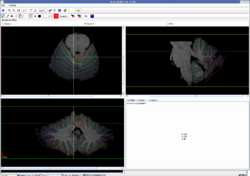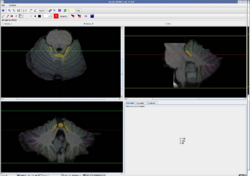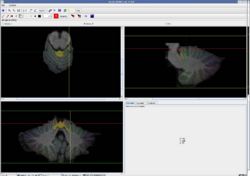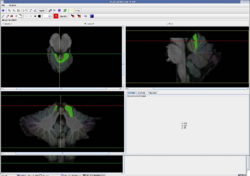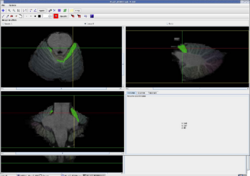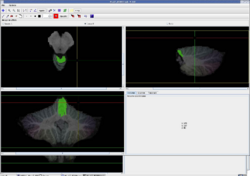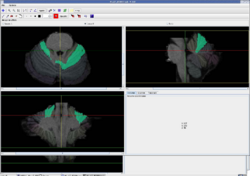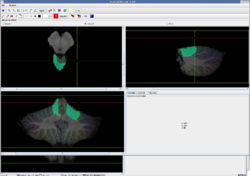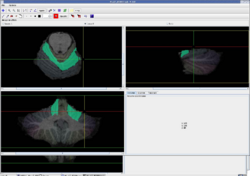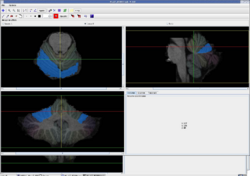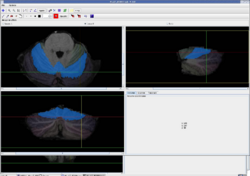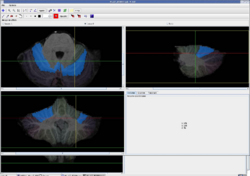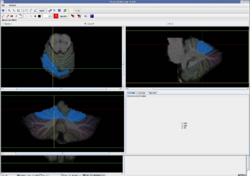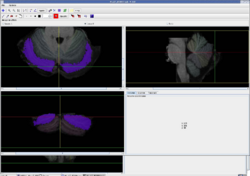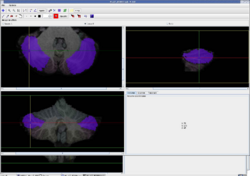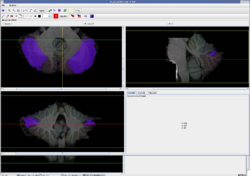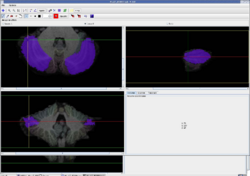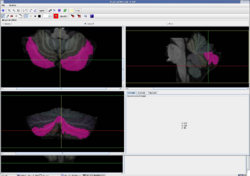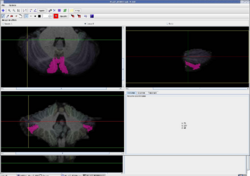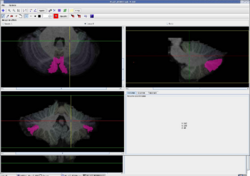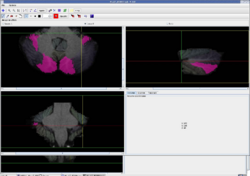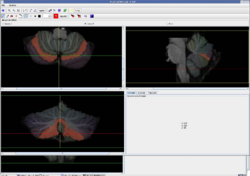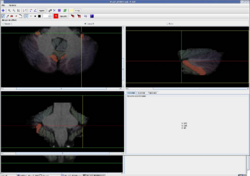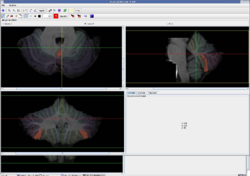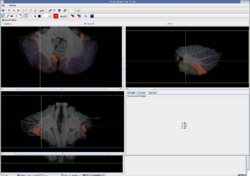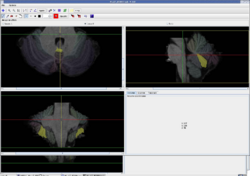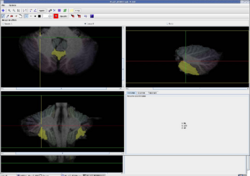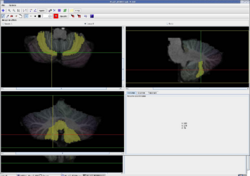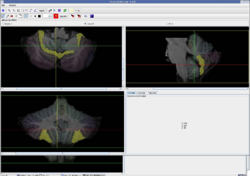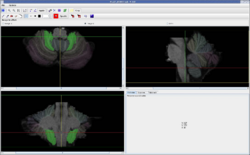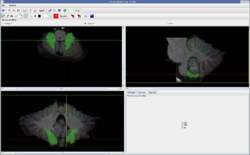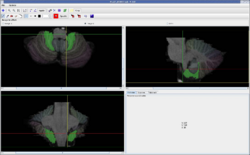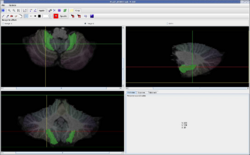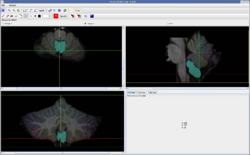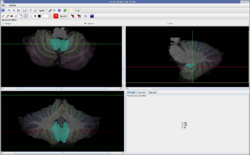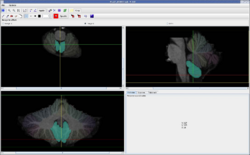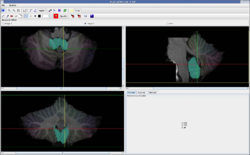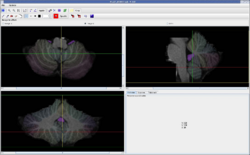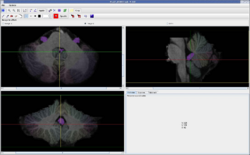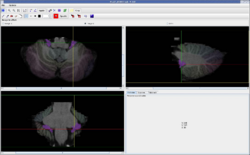Lobule Delineation
Revision as of 15:35, 17 September 2008 by Rachel (talk | contribs) (New page: <meta name="title" content="PAGE TITLE"/> {{h2|PAGE TITLE or OPENING HEADLINE}} back to Protocol for Cerebellum Delineation The following pages contain var...)
<meta name="title" content="PAGE TITLE"/>
Contents
PAGE TITLE or OPENING HEADLINE
back to Protocol for Cerebellum Delineation
The following pages contain various lobule screen shots. These screen shots were taken at different sections of the cerebellem in no particular sequence.
Lobules I/II
- Location: Within 10-12 slices to the left and right of the mid-sagittal in the mid horizontal region
- Description: Very thin hair like lobule, best identified in the axial orientation as seen below
Lobule III
- Location: Anterior region of the cerebellum towards the top surface
- Description: First fully visible lobule going clockwise (as shown below), best located in the midsagittal region
Lobule IV
- Location: Top portion of the cerebellum, focused around the midline
- Description: Can first be identified in the midsagittal slice, as the lobule to the left (inwards) of the top most vertical fissure (shown in Figure 41)
Lobule V
- Location: Top portion of the cerebellum, focused mainly around the midline
- Description: Can first be identified in the midsagittal slice, as the lobule to the right (outwards) of the top most fissure (shown in Figure 44)
Lobule VI
- Location: Spans almost entire cerebellum, except the far lateral sides
- Description: One boundary is easily identifiable in the midsagittal region as there is a clear, wide fissure separating lobules V and VI (see Figure 47)
Lobule VIIA - Crus I
- Location: Spans entire cerebellum except for a few slices around the midsagittal
- Description: Best to initially identify from the most lateral edges (Figure 53) and the most posterior axial slice (Figure 51)
- Notice how this lobule is not in the midsagittal slice (Figure 51)
Lobule VIIA - Crus II
- Location: Spans entire cerebellum about middle of the sagittal orientation
- Description: This lobule can first be identified and painted in the midsagittal and then the paint can be propagated laterally, can also be seen in the posterior axial slices
- In the midsagittal region, there is an easy to define fissure separating this lobule and Lobule VIIIA (as shown in Figure 55)
Lobule VIIB
- Location: Middle region of cerebellum, extends from midsagittal to most lateral boundaries
- Description: Best to identify and label the boundaries for VIIIA and VIIAt before VIIB as this can be difficult to identify otherwise, first identification might best be made in the axial orientation towards the posterior end (see Figure 59)
Lobule VIIIA
- Location: Lower regions of the cerebellum, extends from midline laterally
- Description: Best to identify and label the boundary for VIIIB before VIIIA as the lower boundary can be difficult to identify otherwise
- The fissure between this lobule and Lobule VIIA Crus I is easily identified in the midsagittal slice as seen in Figure 63
Lobule VIIIB
- Location: Lower most region of the cerebellum in the sagittal orientation
- Description: can be identified as the lobule that curves around lobule IX as shown in Figure 68
- Notice how this lobule is not located in the midsagittal (Figure 67)
Lobule IX
- Location: Lowest portion of the cerebellum in the midsagittal
- Description: First identification can be made in the midsagittal as the region of the cerebellum that seems to be detached from the main branch (as shown in Figure 71) , after initial identification, the axial view is best for further delineation
- Best view(s) for delineation: Axial/ Coronal/ Sagittal
Lobule X
- Location: Within 10 slices to the left and right of the midsagittal along the vermis section, and also the flocculi (anterior portion of the cerebellum)
- Description: Flocculi best identified in the coronal orientation, anterior most part of the cerebellum located in the center
- Best view(s) for delineation*: Axial/ Sagittal/ Coronal for the flocculi
